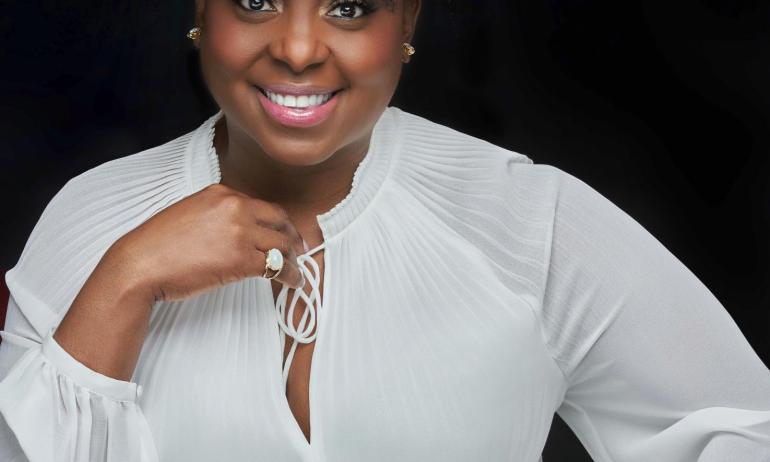Expert Testimony
Jack Perricone
In 1986, Jack Perricone joined the Berklee faculty as the first chair of the Songwriting Department. He broke ground right away by developing courses for the nation’s first college-level songwriting major.
Among his contributions in that role were courses on the business of songwriting, song survey courses, and designing the MIDI home recording lab facilities. Perricone earned his master’s degree in composition at Indiana University and later worked in New York as a jingle writer and arranger and conductor for various recording artists. His credits as a songwriter include titles for Angela Bofill, Lou Rawls, David Geddes, and others.
Perricone penned the book Melody in Songwriting: Tools and Techniques for Writing Hit Songs for Berklee press in 2000. Oxford University Press has just released his thoroughgoing 379-page book Great Songwriting Techniques. Perricone took a few minutes to share thoughts on trends in songwriting and the importance of learning the craft of songwriting.
Do you believe that melody is the most important component of a popular song?
Melody certainly is an attractive component and often is the most memorable element in a song. The main musical parts in a song are melody, groove, tonal/harmonic environment, and texture. But honestly, discussing each element separately doesn’t address the most important occurrence: prosody. Prosody is the way the components in a song—especially words and music—interact and enhance one another. I do spend a great many pages in my new book dealing with the subject of melody because there is a scarcity of material given to this area both in books and in music schools. I spend equal or more time on prosody.
What would you tell people who shy away from learning the craft of songwriting in favor of an intuition-only approach?
First, we must ask, “What place does intuition play in the creative process?” If you use an intuition-only approach you are relying solely on your imagination, feeling, and luck. I believe that your intuition can work in tandem with your intellect and can also be aligned with your intellect. When intuition and intellect are aligned, your intuition is fueled by real knowledge, knowledge sometimes buried deep within that becomes available when your emotions are turned on. These two aspects of your being, feelings and intellect, are often thought to be antagonists, but are, instead, great allies. When you align your imagination with knowledge, you create a flow in your process. You do not get stuck every 10 minutes and aren’t forced to add one more to your long list of unfinished songs.
As an observer of songwriting, have you seen a progression from the long melodic phrases of songs in the Great American Songbook through the 1960s to a trend for shorter repeated phrases comprising a verse to hip-hop and rap melodies?
Popular songs and the way they are presented reflect the society in which they are born. Popular songs from 1900 to the early 1950s often contained lush harmonies, romantic lyrics, and long-lined melodies. Even during World War II, the popular music America listened to was mainly romantic, full of fantasy and positive feelings to buoy up hope and to keep the American dream alive, much like the Hollywood movies that were popular at that time.
The public’s taste for lush harmonies and long-lined melodies has gradually dwindled since the end of the war. During the mid-1950s, teenagers rather than adults became the target audience for the sale of records for the first time. Many teenagers were being given allowances, which was a result of America’s affluence provided by the outcome of the war. Early rock and roll heralded this new generation with blues-infused melodies that hit them with the rhythmic ferocity of a freight train in songs like Chuck Berry’s “Johnny B. Goode” and Little Richard’s “Good Golly Miss Molly.”
There are always several streams of styles that run parallel to each other in every era, therefore, it is difficult to pin melodic attributes to any one era. For example, the funk-driven rhythmic melody of James Brown’s “Cold Sweat” appeared on the Billboard charts in 1967 alongside Jimmy Webb’s “MacArthur Park” with its lush harmonies, long-lined melody, and over-the-top arrangement and production.
The most recent major change in style came with hip-hop and rap. They almost completely eschewed any romantic gestures and soon pop songs began incorporating rap rhythms within pitched-melody. The resulting melodies, containing fast moving rhythms, produced a flattening out of the melodic contour—because it is difficult and almost impossible to sing a fast-moving melody with intervals larger than a third and simultaneously enunciate lyrics.
Contemporary pop hits, while using rap rhythms, do rely on melody to seduce listeners, and often contain multiple melodic hooks with unique rhythms and larger-than-a-third intervals to establish their memorability. Short repetitious melodic phrases abound, but phrase lengths vary and the length of phrases within each section is used as a contrasting device in helping to delineate the form.
But there are many exceptions to what I’ve just said, especially in the contemporary songs written and sung by singer/songwriters and in country music, where some of the pop-music traits show up, but where longer-lined melodies also appear. My commentary centers on the mainstream pop music today.
Regarding harmony, your latest book has a section on the “physicality of chords” and how they add weight to a song. Do you feel that listeners could develop an appetite for adventurous chord progressions in pop songs?
The public has proven in the past that it can embrace songs with interesting and adventurous chord progressions. During the late ’60s, the songs of the Beatles and Burt Bacharach employed innovative and challenging harmonies and in the ’70s, Stevie Wonder and Joni Mitchell used innovative, jazz-influenced-chords in their songs.
Unlike professional musicians, the public does not respond to isolated chords or even to harmonic relationships; it responds to the whole, to the interaction of words to music to the effect of the entire song and production. Today, because of the Internet, we have a culture that is demographically diverse and is inundated with influences from everywhere, resulting in a multiplicity of musical styles. A good example of this and of adventurous harmony occurring in popular songs is Kendrick Lamar’s use of jazz in his album To Pimp a Butterfly. However, the mainstream pop-music audience today wants a music that is not romantically overblown—so rich harmonies, along with long-lined melodies, are a rare occurrence.
Can you give a few thoughts about the formula you discuss in your book called “simple and interesting?”
Sure. My contention is that most hit songs are both simple and interesting, (i.e., they appear to be simple but often have a level of interest not perceived by listeners). A comment frequently made by both professional musicians and budding songwriters about a song that has gained popular success is, “It’s so simple.” But that fact is a given—a popular song has to be simple enough for the public to grasp it. That is why there are no popular songs utilizing the 12-tone technique and very few that use mixed meters or poly-tonality. Presently, there are very few songs that even modulate! What is not generally perceived are the interesting and sometimes quite complex activities, both in the music and in the lyrics, that keep folks listening.
A good contemporary example of “simple and interesting” is the way certain songs that are based on a looped, four-chord progression have a contrasting melody in each section that is defined by its melodic rhythms, its tessitura, and where in the measure the melodic phrases enter and exit. The “simple” part of my formula in this case is provided by the repetitious chord progression; the “interesting” part is provided by the contrasting melodic rhythms, the change in tessitura and the relationship of the melodic phrases to the repetitious harmonic phrases.
Do you have any suggestions for getting started when you sit down to write but can’t find that first idea?
I suggest trying different approaches to beginning a song—if one approach doesn’t work, try another. What you need is something that gets you personally and emotionally involved. You want your song to say something, to be driven by your emotions and body, and to be helped by your intellect.
Sometimes a song title can generate ideas that will lead you to that place. How evocative one lyric phrase such as “Call Me Maybe” or “Someone Like You,” or even one word like “Superstition” or “Hello” can be. Music is a great generator of emotion and if you are able to compose a musical idea, a unique melodic motive or a melodic phrase that has a harmony that produces an emotional reaction from you, that alone may generate some words that blossom into a lyric concept that carries a song to its fulfillment.
Another good place to start is with your body. You may have heard a groove in your mind or one that you borrow from another song, or you may go to your DAW and create a drum loop that gets your body going. You may even start with an intellectual challenge like prompting yourself to write a song to a loop-based chord progression and vow to keep that progression going for at least two out of three sections of the song. That will work as long as you make an emotional connection to the sounds you’ve produced. The most important thing to do is to begin and then give it everything you have. If you can’t jump-start a song that day, there is always that night or the next morning.
That said, I find that most budding songwriters have no problem starting a song. Their problem is usually continuing and finishing the song. That is where my book, which contains many techniques that show people how to develop and treat ideas can be most useful.




